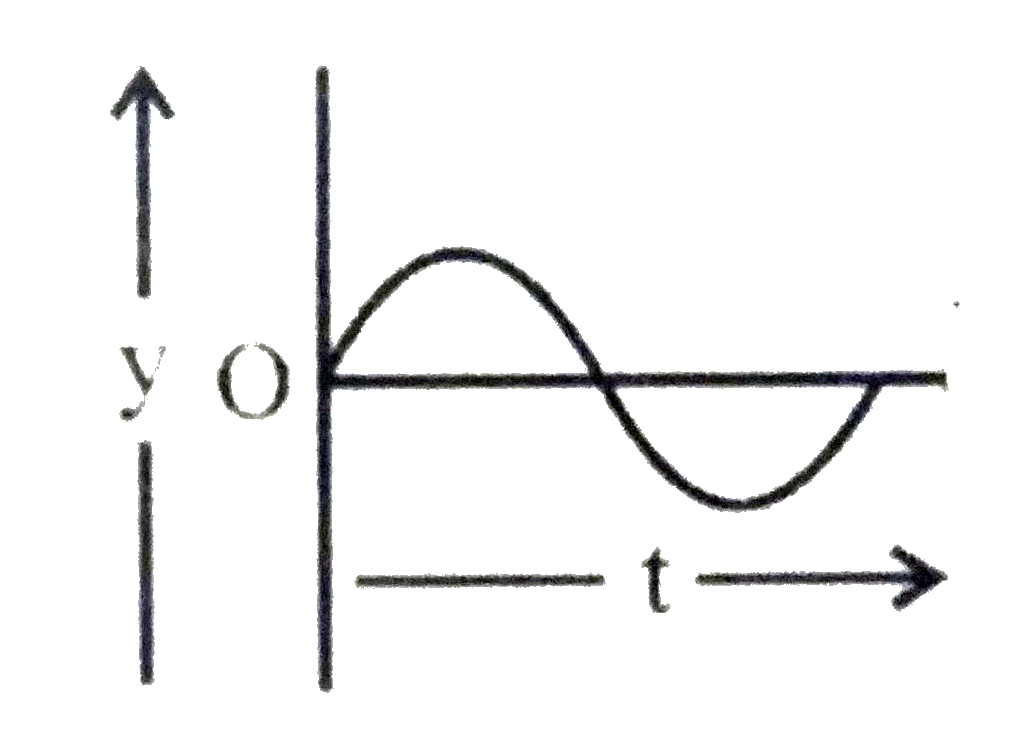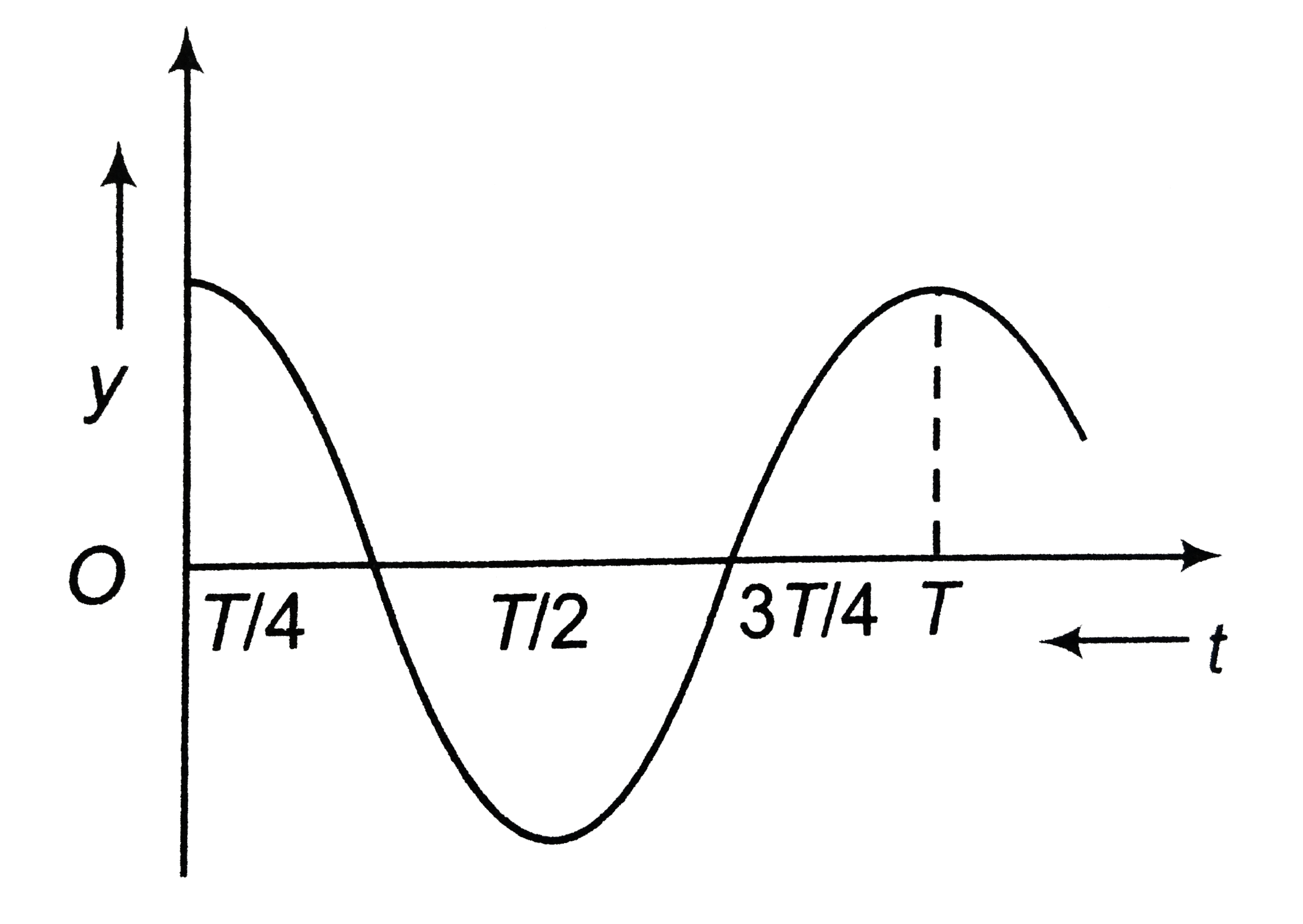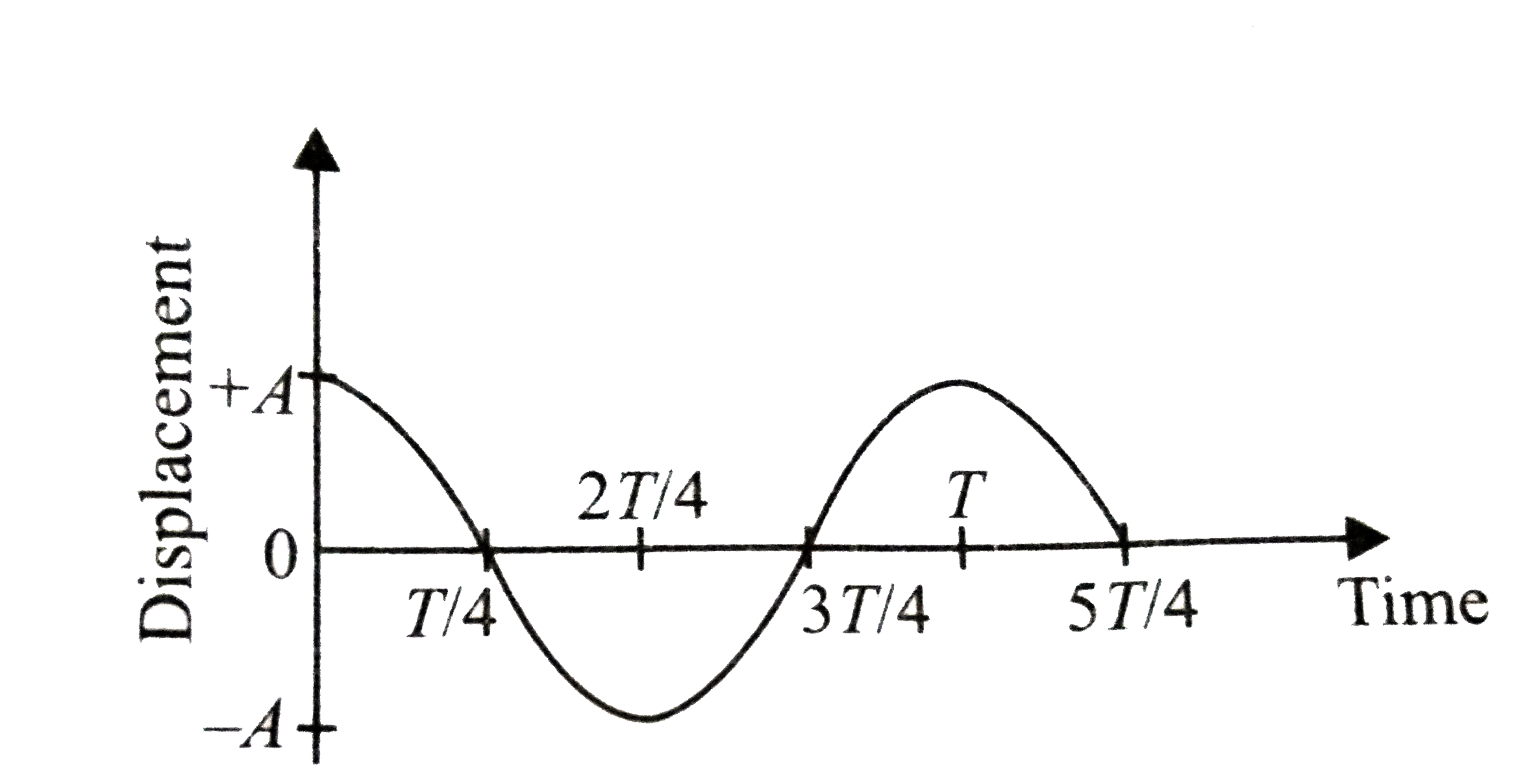The following figure shows displacement versus time curve for a particle executing simple harmonic motion :

Which one of the following statements is correct?
Phase of the oscillating particle is same at t = 1 s and t= 3 s
Phase of the oscillating particle is same at t = 2 s and t= 8 s
Phase of the oscillating particle is same at t = 3 s and t= 7 s
Phase of the oscillating particle is same at t = 4 s and t = 10 s
The correct Answer is:C
Phase of oscillating particle at any instant is a physical quantity which completely expresses the position and direction of motion of particle at that instant with respect to its mean position. Phase of the oscillating particle is same at t = 3 s and t = 7 s.
Topper's Solved these Questions
Similar Questions
Knowledge Check
For a particle executing simple harmonic motion, which of the following statements is not correct
AThe total energy of the particle always remains the sameBThe restoring force of always directed towards a fixed pointCThe restoring force is maximum at the extreme positionsDThe acceleration of the particle is maximum at the equilibrium positionThe velocity of a particle executing simple harmonic motion is
Aω2√A2+x2Bω√A2−x2Cω√A2+x2Dω2√A2−x2While a particle executes linear simple harmonic motion
Aits linear velocity and acceleration pass through their maximum and minimum values once in each oscillation.BIts linear velocity and acceleration pass through their maximum and minimum values twice in each oscillation.Cits linear velocity and acceleration pass through their maximum and minimum values four times in each oscillation.Dits linear velocity and acceleration always attain their peak values simlataneaously.
The displacement-time graph of a particle executing simple harmonic motion is shown in the figure

Which one of the following graphs is the correct forcetime graph for the motion of the particle ?
View Solution
The following figure shows the displacement versus time graph for two particles A and B executing simple harmonic motions. The ratio of their maximum velocities is
View SolutionThe phase of a particle executing simple harmonic motion is π2 when it has
View SolutionThe displacement - time graph of a particle executing SHM is shown in figure. Which of the following statements is//are true ?

View SolutionThe displacement -time graph of a particle executing SHM is shown in figure. Which of the following statements is/are true ?

View Solution

